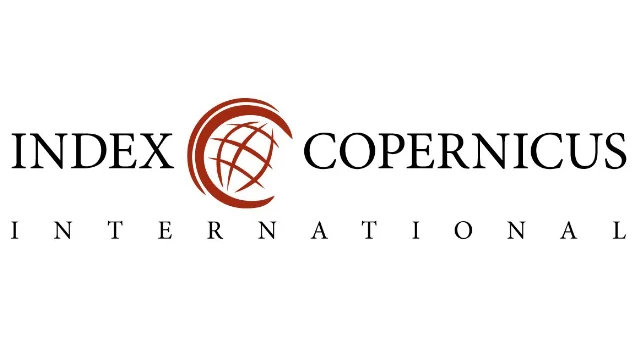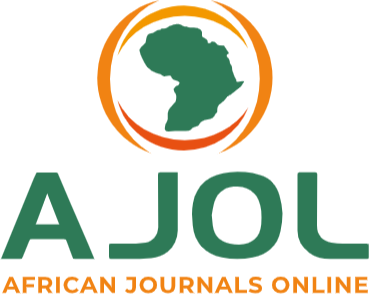Optimized Fast R-CNN for Automated Parking Space Detection: Evaluating Efficiency with MiniFasterRCNN
DOI:
https://doi.org/10.4314/p272b841Keywords:
Parking Space Detection, fast R-CNN, transfer learning, computer vision, object detectionAbstract
Automated parking space detection is a crucial application of computer vision in intelligent transportation systems. In this study, we developed a Fast R-CNN-based model for classifying and localizing parking spaces into empty and occupied categories. The model architecture consists of a pre-trained CNN backbone (ResNet50) for feature extraction, a Region Proposal Network (RPN) for generating potential bounding boxes, and Region-of-Interest (RoI) pooling for feature refinement. The classification head utilizes a softmax activation function with cross-entropy loss, while the bounding box coordinates are refined using smooth L1 loss. To facilitate training, we employed Roboflow for dataset annotation, creating ground truth bounding boxes for parking spaces. The model was fine-tuned using transfer learning, leveraging knowledge from the COCO dataset. Training involved hyperparameter optimization, including learning rate scheduling and weight decay, to enhance convergence. Model selection was based on validation loss and accuracy to ensure generalization to unseen data. The model was deployed using Gradio, allowing real-time parking space detection from uploaded images. Despite achieving a final loss of 0.8280, the model exhibited some background noise distortions, impacting detection accuracy. To address this limitation, we explored a lightweight alternative, MiniFasterRCNN, optimized for efficiency with a simpler architecture. The MiniFasterRCNN was trained on a three-class dataset (empty, occupied, background), achieving a validation accuracy of 77.78%. However, attempts to achieve 100% accuracy proved inefficient, highlighting the need for further improvements, such as segmentation techniques (Masked R-CNN). This research demonstrates the feasibility of Fast R-CNN-based models for parking space detection while emphasizing the importance of architectural optimizations and hyperparameter tuning for improved accuracy and robustness in real-world applications
Downloads
Published
Issue
Section
Most read articles by the same author(s)
- Olumide Oni, Memory-Enhanced Conversational AI: A Generative Approach for Context-Aware and Personalized Chatbots , Communication In Physical Sciences: Vol. 12 No. 2 (2025): VOLUME 12 ISSUE 2
Similar Articles
- Ademilola Olowofela Adeleye, Oluwafemi Clement Adeusi, Aminath Bolaji Bello, Israel Ayooluwa Agbo-Adediran, Intelligent Machine Learning Approaches for Data-Driven Cybersecurity and Advanced Protection , Communication In Physical Sciences: Vol. 7 No. 4 (2021): VOLUME 7 ISSUE 4
- Fatima Binta Adamu, Muhammad Bashir Abdullahi, Sulaimon Adebayo Bashir, Abiodun Musa Aibinu, Conceptual Design Of A Hybrid Deep Learning Model For Classification Of Cervical Cancer Acetic Acid Images , Communication In Physical Sciences: Vol. 12 No. 2 (2025): VOLUME 12 ISSUE 2
- Christianah Oluwabunmi Ayodele, Esther Oludele Olaniyi, Chukwuebuka Francis Udokporo, Applications of AI in Enhancing Environmental Healthcare Delivery Systems: A Review , Communication In Physical Sciences: Vol. 12 No. 5 (2025): Vol 12 ISSUE 5
- Michael Oladipo Akinsanya, Oluwafemi Clement Adeusi, Kazeem Bamidele Ajanaku, A Detailed Review of Contemporary Cyber/Network Security Approaches and Emerging Challenges , Communication In Physical Sciences: Vol. 8 No. 4 (2022): VOLUME 8 ISSUE 4
- Humphrey Sam Samuel, Emmanuel Edet Etim, John Paul Shinggu, Bulus. Bako , Machine learning of Rotational spectra analysis in interstellar medium , Communication In Physical Sciences: Vol. 10 No. 1 (2023): VOLUME 10 ISSUE 1
- Olaleye Ibiyeye, Joy Nnenna Okolo, Samuel Adetayo Adeniji, A Comprehensive Evaluation of AI-Driven Data Science Models in Cybersecurity: Covering Intrusion Detection, Threat Analysis, Intelligent Automation, and Adaptive Decision-Making Systems , Communication In Physical Sciences: Vol. 8 No. 4 (2022): VOLUME 8 ISSUE 4
- Joy Nnenna Okolo, A Review of Machine and Deep Learning Approaches for Enhancing Cybersecurity and Privacy in the Internet of Devices , Communication In Physical Sciences: Vol. 9 No. 4 (2023): VOLUME 9 ISSUE 4
- David Adetunji Ademilua, Edoise Areghan, AI-Driven Cloud Security Frameworks: Techniques, Challenges, and Lessons from Case Studies , Communication In Physical Sciences: Vol. 8 No. 4 (2022): VOLUME 8 ISSUE 4
- David Adetunji Ademilua, Edoise Areghan, Cloud Computing and Machine Learning for Scalable Predictive Analytics and Automation: A Framework for Solving Real-world Problems , Communication In Physical Sciences: Vol. 12 No. 2 (2025): VOLUME 12 ISSUE 2
- Michael Oladipo Akinsanya, Aminath Bolaji Bello, Oluwafemi Clement Adeusi, A Comprehensive Review of Edge Computing Approaches for Secure and Efficient Data Processing in IoT Networks , Communication In Physical Sciences: Vol. 9 No. 4 (2023): VOLUME 9 ISSUE 4
You may also start an advanced similarity search for this article.




